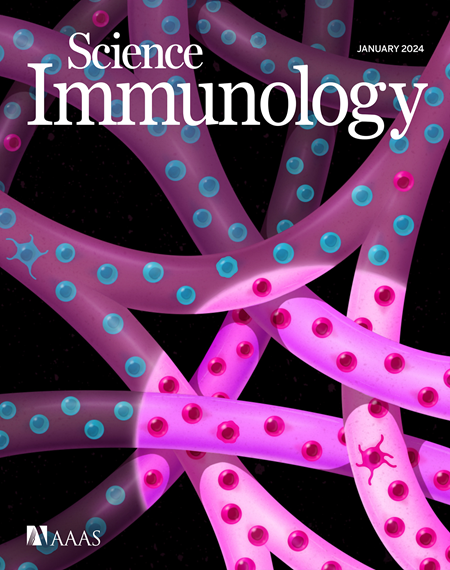A light-regulated circadian timer optimizes neutrophil bactericidal activity to boost daytime immunity
IF 17.6
1区 医学
Q1 IMMUNOLOGY
引用次数: 0
Abstract
The immune response exhibits strong circadian rhythmicity, with enhanced bacterial clearance often synchronized with an organism’s active phase. Despite providing the bulk of cellular antibacterial defense, the neutrophil clockwork is poorly understood. Here, we used larval zebrafish to explore the role of clock genes in neutrophils during infection. Per2 was required in neutrophils for reactive oxygen species (ROS) production and bacterial killing by enhancing infection-responsive expression of high-mobility group box 1a (hmgb1a). The Cry binding domain of Per2 was required for regulation of neutrophil bactericidal activity, and neutrophils lacking Cry1a had elevated bactericidal activity and infection-responsive hmgb1a expression. A conserved cis-regulatory element with BMAL1 and nuclear factor κB binding motifs gated infection-responsive hmgb1a expression to the light phase. Mutagenesis of the BMAL1 motif in neutrophils blunted the priming effect of light on bactericidal activity and hmgb1a expression. These findings identify a light-responsive cell-intrinsic timer that controls time-of-day variations in antibacterial activity.
光调节昼夜节律计时器优化中性粒细胞杀菌活性,提高白天免疫力
免疫反应表现出强烈的昼夜节律性,细菌清除的增强通常与生物体的活跃期同步。尽管提供了大量的细胞抗菌防御,中性粒细胞时钟机制知之甚少。在这里,我们使用斑马鱼幼虫来探索时钟基因在感染中性粒细胞中的作用。中性粒细胞需要Per2通过增强高迁移率组框1a (hmgb1a)的感染反应性表达来产生活性氧(ROS)和杀死细菌。Per2的Cry结合结构域是中性粒细胞杀菌活性调控所必需的,缺乏Cry1a的中性粒细胞杀菌活性和hmgb1a的感染反应性表达升高。一个保守的带有BMAL1和核因子κB结合基序的顺式调控元件控制了感染反应性hmgb1a的表达到光期。中性粒细胞中BMAL1基序的诱变减弱了光对杀菌活性和hmgb1a表达的启动效应。这些发现确定了一种光反应细胞的内在计时器,它控制着抗菌活性的时间变化。
本文章由计算机程序翻译,如有差异,请以英文原文为准。
求助全文
约1分钟内获得全文
求助全文
来源期刊

Science Immunology
Immunology and Microbiology-Immunology
CiteScore
32.90
自引率
2.00%
发文量
183
期刊介绍:
Science Immunology is a peer-reviewed journal that publishes original research articles in the field of immunology. The journal encourages the submission of research findings from all areas of immunology, including studies on innate and adaptive immunity, immune cell development and differentiation, immunogenomics, systems immunology, structural immunology, antigen presentation, immunometabolism, and mucosal immunology. Additionally, the journal covers research on immune contributions to health and disease, such as host defense, inflammation, cancer immunology, autoimmunity, allergy, transplantation, and immunodeficiency. Science Immunology maintains the same high-quality standard as other journals in the Science family and aims to facilitate understanding of the immune system by showcasing innovative advances in immunology research from all organisms and model systems, including humans.
 求助内容:
求助内容: 应助结果提醒方式:
应助结果提醒方式:


